Is it possible to move/shift the tick labels into the chart. Currently I see api's to hide/show tick labels is there an API that moves the tick labels inside the chart? If there isn't an API then is there a technique that I can use/apply to get this done?
Current code
public class Graph extends Application{
private NumberAxis xAxis;
private NumberAxis yAxis;
public static void main(final String[] args)
{
launch(args);
}
@Override
public void start(final Stage primaryStage) throws Exception
{
xAxis = new NumberAxis(0, 300, 20);
xAxis.setAutoRanging(false);
xAxis.setAnimated(false);
xAxis.setMinorTickVisible(false);
xAxis.setTickLabelsVisible(false);
xAxis.setTickMarkVisible(false);
yAxis = new NumberAxis(30, 240, 30);
yAxis.setAutoRanging(false);
yAxis.setAnimated(false);
yAxis.setTickMarkVisible(false);
yAxis.setMinorTickVisible(false);
yAxis.setMinorTickCount(3);
final LineChart<Number, Number> ctg = new LineChart<>(xAxis, yAxis);
ctg.setAnimated(false);
ctg.setCreateSymbols(false);
ctg.setAlternativeRowFillVisible(false);
ctg.setLegendVisible(false);
ctg.setHorizontalGridLinesVisible(true);
ctg.setVerticalGridLinesVisible(true);
Series<Number, Number> series = new LineChart.Series<>();
ctg.getData().add(series);
for (int i = 0; i < 300; i += 5) {
XYChart.Series minorYGrid = new XYChart.Series();
minorYGrid.getData().add(new XYChart.Data(i, 30));
minorYGrid.getData().add(new XYChart.Data(i, 240));
ctg.getData().add(minorYGrid);
}
for (int i = 40; i <= 240; i += 10) {
XYChart.Series minorXGrid = new XYChart.Series();
minorXGrid.getData().add(new XYChart.Data(0, i));
minorXGrid.getData().add(new XYChart.Data(500, i));
ctg.getData().add(minorXGrid);
}
final Scene scene = new Scene(ctg, 1600, 400);
scene.getStylesheets().add("resources/application.css");
primaryStage.setScene(scene);
primaryStage.show();
}
}
Current result

Expected result

